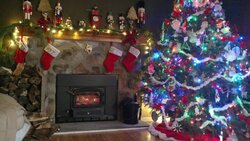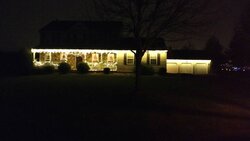I'm thinking about buying several strings of led tree lights. Does anyone have any experience or ideas about them?
My main concerns are longevity, white color consistency, etc. I'm after something that will look pretty much like typical 100 light strings, but more reliable.
Any advice about brand names or anything else I should look for?
My main concerns are longevity, white color consistency, etc. I'm after something that will look pretty much like typical 100 light strings, but more reliable.
Any advice about brand names or anything else I should look for?



 All in fun of course. He and others steered me well, though. Pretty perceptive of him actually.
All in fun of course. He and others steered me well, though. Pretty perceptive of him actually.


